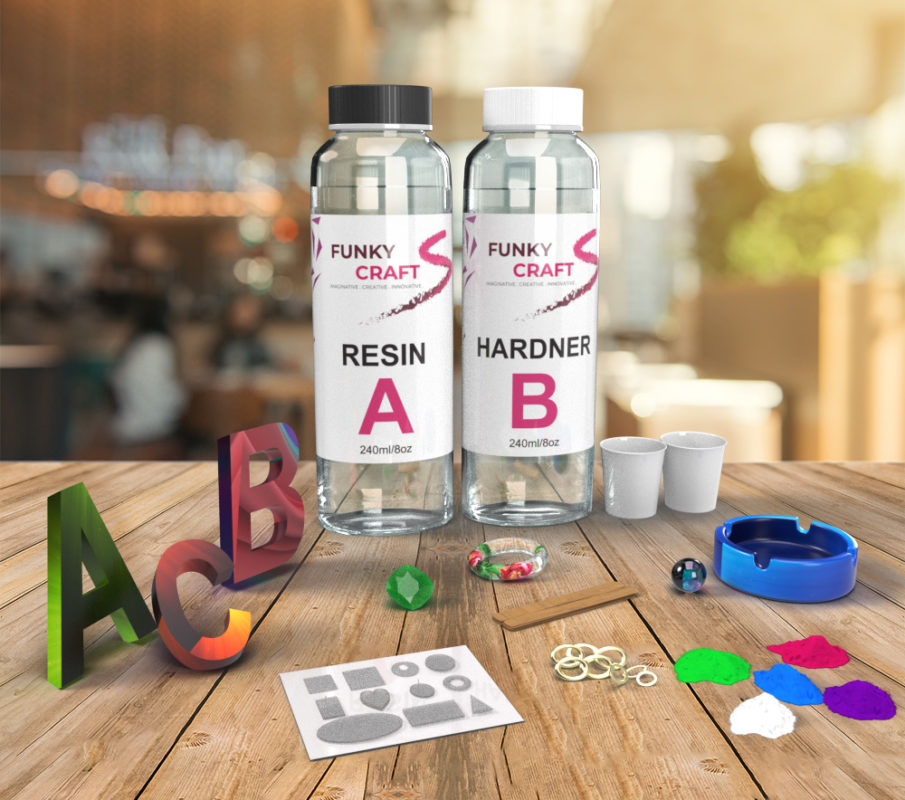Resin Crafting: Unlocking Your Creativity and Imagination
Crafting is an age-old hobby that has always provided a sense of fulfillment, joy, and relaxation for those who engage in it. There are so many different ways to craft, from painting to sewing to woodworking. However, one craft that has taken the world by storm in recent years is resin crafting. Resin is a versatile material that can be used to create a wide variety of projects, from jewelry to home decor to art pieces.
In this guide, we will explore the world of resin crafting and show you just how much fun and creativity you can have with this incredible material.
Table of Contents
- What is Resin?
- Types of Resin for Crafting
- Epoxy Resin
- Polyester Resin
- Polyurethane Resin
- Safety Precautions When Working with Resin
- Materials Needed for Resin Crafting
- Basic Resin Crafting Techniques
- Mixing Resin
- Pouring Resin
- Adding Color and Effects to Resin
- Advanced Resin Crafting Techniques
- Embedding Objects in Resin
- Creating Resin Geodes
- Making Resin Jewelry
- Resin Art Techniques
- Tips for Successful Resin Crafting
- Frequently Asked Questions
- Is resin crafting safe?
- Can resin be used to make food-safe items?
- Can resin be painted?
- How long does it take for resin to cure?
- Can you mix different types of resin together?
What is Resin?
Resin is a synthetic polymer that is created through a chemical reaction between two or more components. These components create a liquid substance that hardens over time when mixed together. The resulting material is durable, water-resistant, and can be molded into a wide variety of shapes and forms.
Resin is often used in manufacturing, construction, and other industrial applications, but it has also gained popularity in the crafting world due to its versatility and ease of use. With resin, crafters can create striking and unique pieces that are both functional and decorative.
Types of Resin for Crafting
There are three main types of resin that are commonly used in crafting: epoxy resin, polyester resin, and polyurethane resin. Each type of resin has its own unique properties and characteristics, which make them suitable for different types of projects.
Epoxy Resin
Epoxy resin is one of the most popular types of resin for crafting. It is a two-part resin that is mixed together in equal parts and then poured onto a surface. Epoxy resin cures to a hard, durable finish that is resistant to water, chemicals, and UV rays. It is ideal for creating jewelry, coasters, and other small decorative items.
Polyester Resin
Polyester resin is another type of resin that is commonly used in crafting. It is a one-part resin that is poured onto a surface and then allowed to cure over time. Polyester resin cures to a hard, durable finish that is resistant to water and UV rays. It is ideal for creating large sculptures, home decor items, and other large-scale projects.
Polyurethane Resin
Polyurethane resin is a two-part resin that is mixed together in equal parts and then poured onto a surface. It cures to a hard, durable finish that is resistant to water, chemicals, and UV rays. Polyurethane resin is ideal for creating molds and casts, as well as small decorative items such as jewelry and coasters.
Safety Precautions When Working with Resin
While resin is a versatile and exciting material to work with, it is imperative to take proper safety precautions when dealing with it. Resin can emit harmful fumes, so it is essential to work in a well-ventilated area or use a respirator mask. It is also imperative to wear protective gloves and clothing to prevent skin contact with resin.
Additionally, it is crucial to read and follow the manufacturer’s instructions carefully. Each type of resin has its own unique curing time, mixing ratio, and other specific instructions that should be read closely for the most optimal results. By taking the necessary safety precautions and following the instructions, you can create beautiful resin projects safely and confidently.
Materials Needed for Resin Crafting
To start resin crafting, you will need some basic materials, including:
- Resin
- Mixing cups
- Stir sticks
- Measuring cups
- Protective gloves and clothing
- Silicone molds
- Pigments and dyes
- Embellishments (such as glitter, beads, and flowers)
These materials can be found at most craft stores or online retailers that specialize in resin crafting supplies.
Basic Resin Crafting Techniques
Mixing Resin:
To begin working with resin, you will need to mix the two components together in the correct ratio. Follow the instructions for your specific type of resin closely, and use a measuring cup and stir stick to mix the resin thoroughly.
Pouring Resin:
Once the resin is mixed, it can be poured into a silicone mold or onto a surface to create a project. Use a stir stick or toothpick to remove any air bubbles from the resin before it cures.
Adding Color and Effects to Resin:
Resin can be tinted with pigments or dyes to create a variety of colors and effects. You can also add embellishments such as glitter, beads, or flowers to the resin before it cures to create unique and personalized projects.
Advanced Resin Crafting Techniques
Embedding Objects in Resin:
One of the most exciting and creative things you can do with resin is embed objects within it. This can include small items such as flowers or shells, or larger objects such as coins or jewelry. To embed an object, pour a layer of resin into your mold or onto your surface. Then, place the object into the resin, and then pour another layer of resin over it.
Creating Resin Geodes:
Resin geodes are a popular and stunning project in the world of resin crafting. To create a resin geode, pour a layer of tinted resin into a circular mold, and then add embellishments such as glitter or crushed glass. Once the first layer has cured, add another layer of resin and embellishments until you achieve the desired depth and texture.
Making resin jewelry:
Resin is an ideal material for creating unique and striking jewelry pieces. You can create earrings, necklaces, and bracelets by pouring resin into silicone molds and adding embellishments such as beads or glitter. Once the resin has cured, you can attach jewelry findings such as ear wires or chains to complete the piece.
Resin Art Techniques:
Resin can be used to create stunning works of art, from abstract paintings to intricate sculptures. You can use resin to create a three-dimensional effect in your artwork, as well as to add texture and depth. The possibilities are endless when it comes to resin art.
Tips for Successful Resin Crafting
- Follow the instructions carefully.
- Work in a well-ventilated area or wear a respirator mask.
- Wear protective gloves and clothing.
- Use silicone molds for best results.
- Mix resin thoroughly and remove air bubbles before curing.
- Experiment with pigments, dyes, and embellishments for unique effects.
- Practice patience – resin can take several hours to cure.
Conclusion
Resin crafting is an exciting and fulfilling hobby that can bring out your creativity and imagination. Whether you’re a seasoned crafter or just starting out, there are endless possibilities with resin. From creating unique jewelry pieces to making stunning works of art, resin offers a wide range of opportunities to express yourself and create something truly special.
But, as with any crafting material, it is essential to take proper safety precautions when working with resin. It can emit harmful fumes and cause skin irritation if not handled properly. However, by taking the necessary safety measures and following the manufacturer’s instructions carefully, you can enjoy resin crafting safely and confidently.
So, if you’re looking for a new creative outlet, why not give resin crafting a try? With its versatility and endless possibilities, you’re sure to create something that will bring you joy and satisfaction. So go ahead, grab some resin, mix up some color, and let your imagination run wild. The possibilities are truly endless with resin crafting.
Buy here with confidence.
FAQs
- Is resin crafting expensive?
Resin crafting can be expensive, depending on the types of materials you use and the size and complexity of your projects. However, there are many ways to save money, such as buying in bulk or using recycled materials.
- How long does it take for resin to cure?
The curing time for resin varies depending on the type of resin used, the thickness of the pour, and the temperature and humidity of the environment. It can take anywhere from a few hours to several days for resin to cure fully.
- Can resin be painted?
Yes, resin can be painted once it has cured. However, it is important to use a paint specifically designed for use on resin, such as acrylic or enamel paint.
- Can I use resin for outdoor projects?
Resin can be used for outdoor projects, but it is important to use a UV-resistant resin that is specifically designed for outdoor use. Standard resin may yellow or become brittle when exposed to sunlight.
- Is it possible to fix mistakes in resin projects?
It is possible to fix mistakes in resin projects, depending on the nature of the mistake. While minor imperfections can often be sanded or polished away, larger mistakes may require a new pour.



